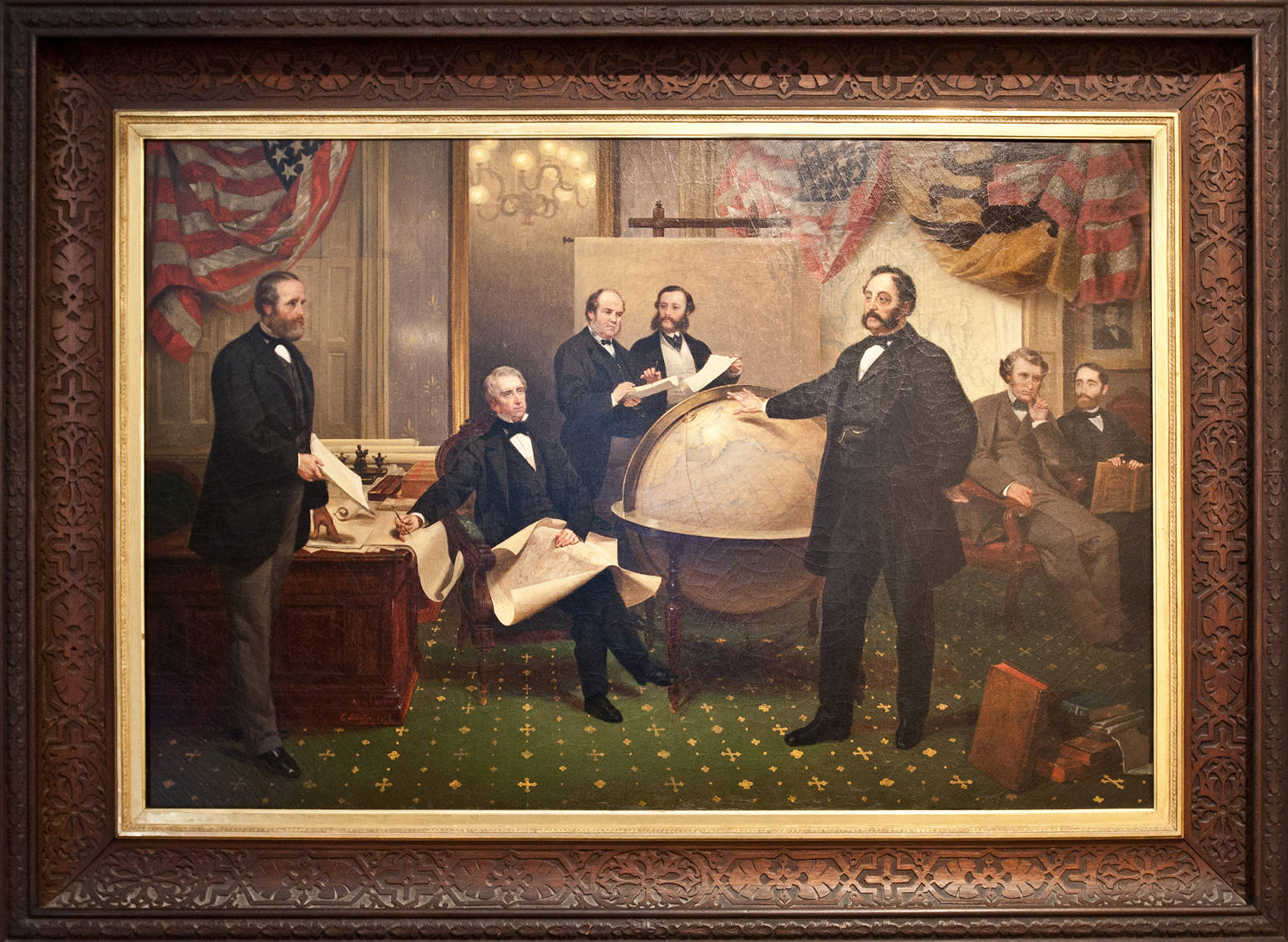Five million dollars or ten million? Payment in dollars, British pounds or gold? In Washington, D.C., Russian envoy Eduard de Stoeckl and Secretary of State William H. Seward dickered for years about transferring Alaska.
Interruptions included the Civil War and the assassination plot that left Abraham Lincoln dead and Seward maimed with stab wounds to the face and neck. But the two men, granted the diplomatic status of plenipotentiaries by the rulers of their nations, returned again and again to the negotiations. De Stoeckl conferred with Czar Alexander’s brother, Grand Duke Konstantin. Seward employed his son as liaison to Sen. Charles Sumner, who promoted the idea in Congress.
By the spring of 1867, they were making real progress and getting down to the final details. On the night of March 29, de Stoeckl showed up on Seward’s doorstep. Hearing that the czar had accepted the latest compromise price, Seward got up from his family card game. He told his counterpart that, despite the late hour, he did not want to delay the treaty a moment longer. They agreed to roust their staffers out of bed and meet at Seward’s office at midnight to bang out and sign the final version.
Thus, at 4 a.m. on March 30, 1867, they signed the Alaska Treaty of Cession and sent it to the Senate.
Later that year, a group of merchants in New York commissioned historical painter Emanuel Gottlieb Leutze to paint a depiction of the treaty signing. Leutze may not be a household name these days, but he was a popular artist of his time. His most famous piece remains recognizable to most Americans: “Washington Crossing the Delaware,” a dramatic albeit mythical image of George Washington standing in a boat during a pivotal night of the Revolutionary War.
Leutze’s more modest “Signing of the Alaska Treaty” was gifted to Seward’s family and usually hangs in the Seward House Museum in its namesake’s former home in Auburn, NY. Two copies of it were made, one in Alaska. This year, for the sesquicentennial, the original is touring Alaska for the first time, on display in Fairbanks, Anchorage and Juneau.
The painting, obviously more allegory than realistic depiction, portrayed Seward, de Stoeckl (dramatically gesturing at Alaska on a globe) and others present at the signing. They do, in the right light, look tired.
Conspicuously missing from the painting, the entire negotiation process, and the treaty’s subsequent ratification were any Alaskans or even people who had visited the place.
The treaty itself, originally written in both English and French, was fairly brief and straightforward. In it, Seward bestowed the name Alaska upon the former Russian America. The borders were defined; the eastern one copied from an 1825 treaty between Russia and Britain, and the western charted as a line dividing the islands linking North America and Asia, from the far Aleutian chain to the Bering Strait and north to what the treaty called “the Frozen Ocean.”
The second article specified that the transfer applied to all real estate, including vacant land. The two exceptions were “private individual property” and churches. The latter were specified as “… the property of such members of the Greek Oriental Church resident in the territory, as may choose to worship therein.”
In Article III the wording became problematic. Residents got three years to return to Russia. If they stayed, they were to become U.S. citizens with all the rights thereof. Unless, however, they were members of “uncivilized native tribes.” Such tribes were not defined, but they were to be subject to U.S. laws and regulations for tribes. Given that the U.S. was in the midst of the ugly Indian Wars on the Great Plains, the outlook for becoming subject to such laws and regulations was grim.
The fourth and fifth articles dealt with the logistics of the transfer. The gist was that the changeover was to be peaceful and completed as swiftly as feasible.
The sixth and last article of the treaty set the final price at $7,200,000, payable in gold. The extra $200,000 generated some subsequent controversy. Juneau historian Wayne Jensen said it was added to pay for telegrams and transfer fees. But it’s rumored that de Stoeckl used the money to pay strategic bribes.
The deal was done, but it would take months for word to reach Alaska.
This is the ninth in a series about Kenai Peninsula history in observance of the 150th anniversary of the US purchase of Alaska, leading up to our local history conference, April 21-22 in Soldotna. For more conference information, check out its website at http://www.kenaipeninsulahistory.org/ and its Facebook page, or phone 907-460-7554.

